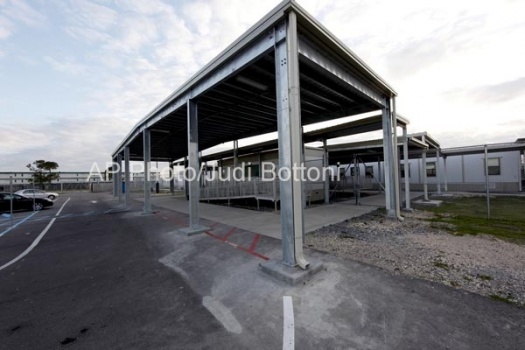
NEW ORLEANS – George Washington Carver High School – a collection of prefabricated buildings that sprang up amid the devastation of Hurricane Katrina – has always been a fertile ground for dreamers.

NEW ORLEANS – George Washington Carver High School – a collection of prefabricated buildings that sprang up amid the devastation of Hurricane Katrina – has always been a fertile ground for dreamers.
Just ask Carver graduate and former NFL star Marshall Faulk.
“A lot of life-lessons were taught at that school and in that football program,” he said. “My coach got me off the street and taught me to believe in myself. That’s what football can do in a school where kids don’t have a lot of other things.”
Carver is the centerpiece of an ambitious plan to restore pride in the 9th Ward community and a lifeline for students who are struggling to reestablish their lives after the devastating storm forced them to flee the city.
The school’s football team and band are back, and a $1.8 million proposal to build a football stadium and Olympic-quality track is gaining steam.
“It would be for more than just Carver, everybody in the city could use it,” said Brian Bordainick, Carver’s 23-year-old athletic director, who hustles the plan constantly. “We want this to be what revives youth sports in New Orleans.”
The effort got a big boost March 9, when the New Orleans Saints announced a $200,000 grant for what Bordainick calls the “9th Ward Field of Dreams.”
Before the announcement of the grant through the NFL Grassroots Program, more than $855,000 had been raised from public and private sources. Donations in small amounts are coming in from individuals, community groups and churches.
“We’ve all lost so much here,” said Mary Lodge Evans, a 1962 Carver graduate and president of the alumni association. “As far as a community, we still have a long way to go, but the school is giving us something to rally around.”
The 531 students – down from 1,200 pre-Katrina – are drawn from all over New Orleans. They are mostly poor and mostly Black. Principal Vanessa Eugene said many students’ lives were disrupted by the storm, and some were homeless or living with someone other than a parent. Some were out of school for a year or two.
“It’s things like our sports and the band that have brought these kids together,” Bordainick said. “They are very proud of what we’re doing here and feel very much a part of it. That’s a big thing for kids who have lost so much.”
Katrina devastated the Carver neighborhood in August 2005, pouring a dozen feet of water into its modest homes and small businesses. Most remain empty, still bearing highwater marks and the circled Xs searchers left as they looked for storm victims.
At present, there is no timetable for removing the old school, let alone beginning construction on a new one, Bordainick said.
______
To read the rest of this article, subscribe to our digital or paper edition. For previous editions, contact us for details.
Copyright 2009 Associated Press. All rights reserved. This material may not be published, broadcast, rewritten, or redistributed.
